
The ability of the immune system to respond appropriately to foreign antigen is dependent on a delicate balance of activating and inhibitory signals. Although positive signaling is essential for the generation of effective immunity, counterbalancing the immune response by inhibitory pathways is equally important. Loss of inhibitory signaling is often associated with autoreactivity and unchecked inflammatory responses, illustrating the essential role these systems play in immune regulation (Ref.1). Pairing of activation and inhibition is therefore, necessary to modulate immune responses. The activation threshold of various cells in the immune system is tuned by immune inhibitory receptors. The inhibitory Fc (Crystalline Fragment) Receptor, Fc-Gamma-RIIB (Fc-Gamma[..]
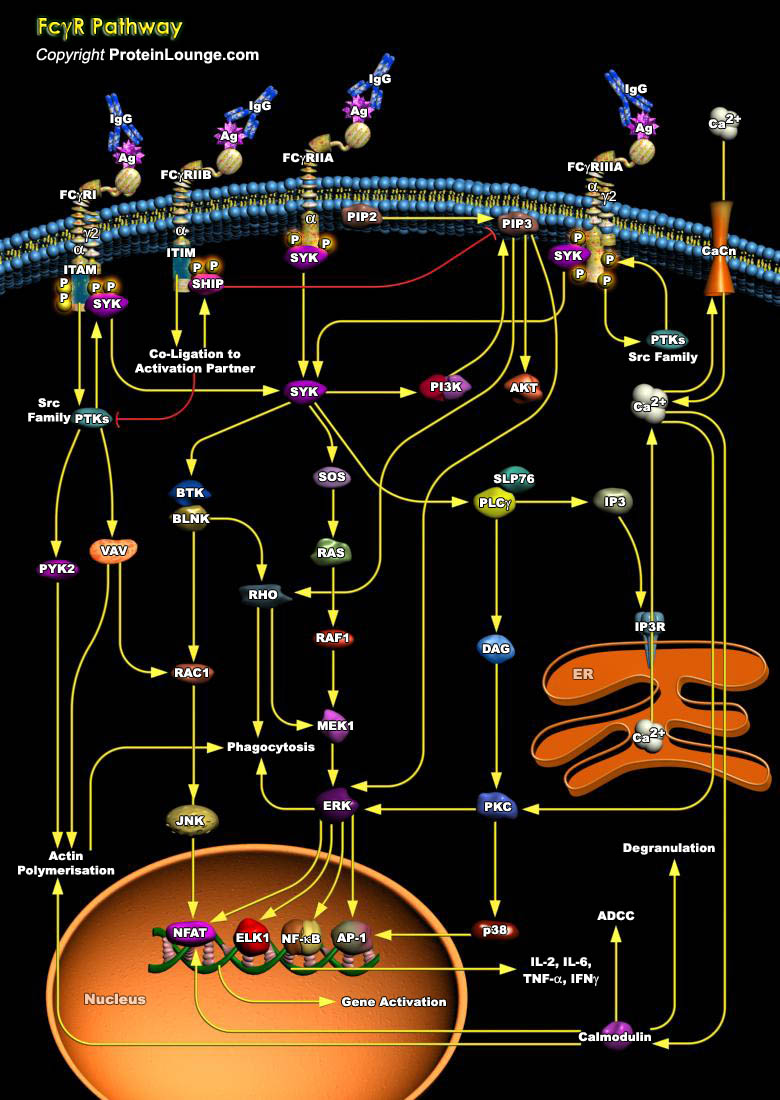
Fcγ receptors are a family of glycoproteins expressed on the membrane of immune cells, and capable of binding the Fc portion of IgG antibody molecules. These receptors bind to various IgG subclasses with different affinities, and when crosslinked by multivalent antigen-antibody complexes, can induce different cellular responses. In humans, several activating receptors (FcγRI/CD64, FcγRIIa/CD32a and FcγRIIIa/CD16a), one inhibitory receptor (FcγRIIb/CD32b), and one glycosylphosphatidylinositol (GPI)-linked receptor, lacking a cytoplasmic tail (FcγRIIIb/CD16b) have been identified [Ref.1].All activating FcγR containing ITAM sequences signal in a similar way at least at the first signaling step. After crosslinking of activating[..]
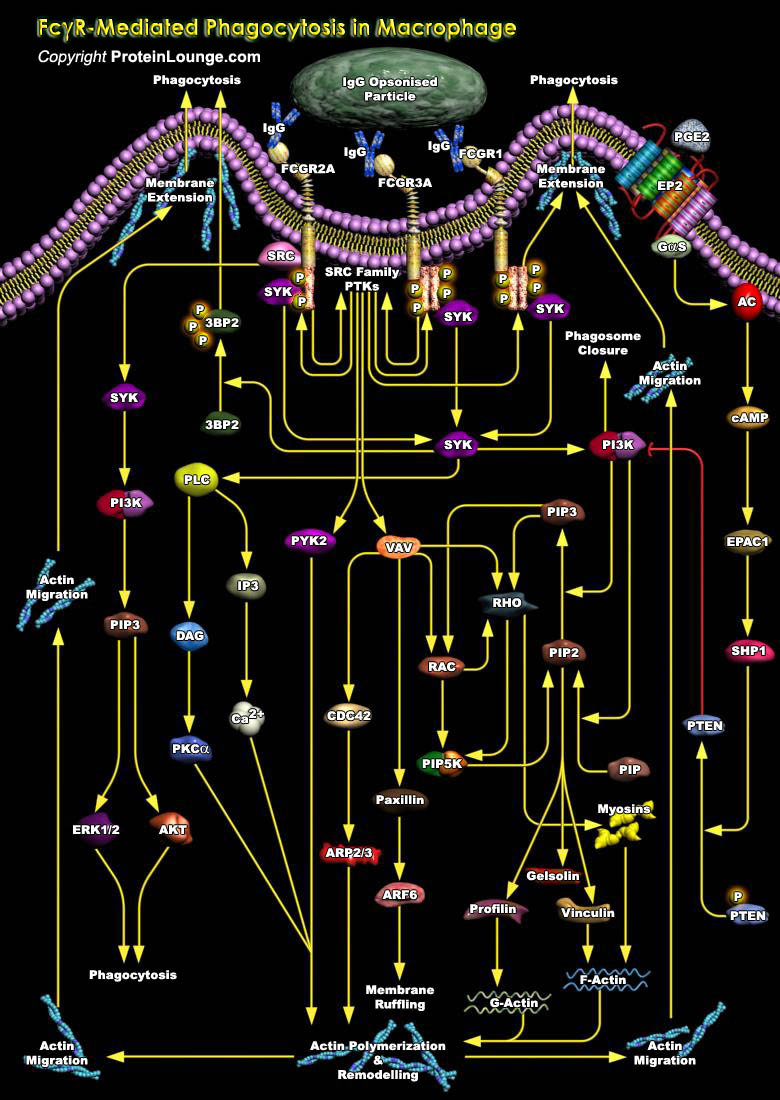
Phagocytosis, defined as the cellular uptake of particulates (>0.5 m) within a plasma-membrane envelope, is closely related to and partly overlaps the endocytosis of soluble ligands by fluid-phase macropinocytic and receptor pathways. The uptake of exogenous particles (heterophagy) has features in common with autophagy, an endogenous process of sequestration and lysosomal disposal of damaged intracellular organelles. There is a spectrum of uptake mechanisms depending on the particle size, multiplicity of receptor-ligand interactions, and involvement of the cytoskeleton. FcRs bind to the constant (Fc portion) of IgG (Immunoglobulin G) or IgA antibodies. IgGs act as opsonins, molecules that render the particle they coat more susceptible to engulfment by the phagocytes.[..]
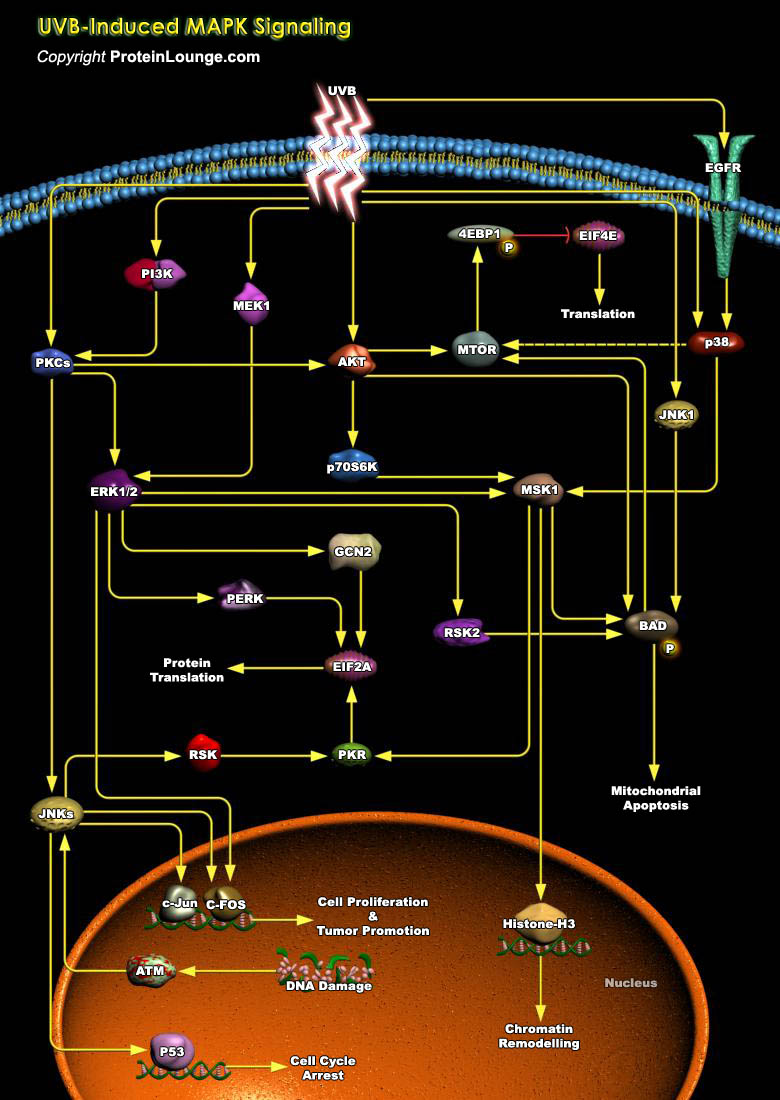
Ultraviolet radiation (UVR) is an electromagnetic radiation that is shorter in wavelength than visible light but longer than X-rays. It falls in the range of 100nm to 400nm and is the most important environmental carcinogen leading to the development of skin cancers. UVR is divided into at least three different categories based on wavelength that includes ultraviolet C (UVC; 100–280 nm), ultraviolet B (UVB; 280–320 nm) and ultraviolet A (UVA; 320–400nm). UVB can be directly absorbed by DNA molecules and thus causes UV-signature DNA damages. UVB promotes tumor growth through various signaling pathways. (Ref.1). UVB unlike UVA, comprises only a small amount of the UVR from the sun at the surface of the Earth and it affects cells within the[..]
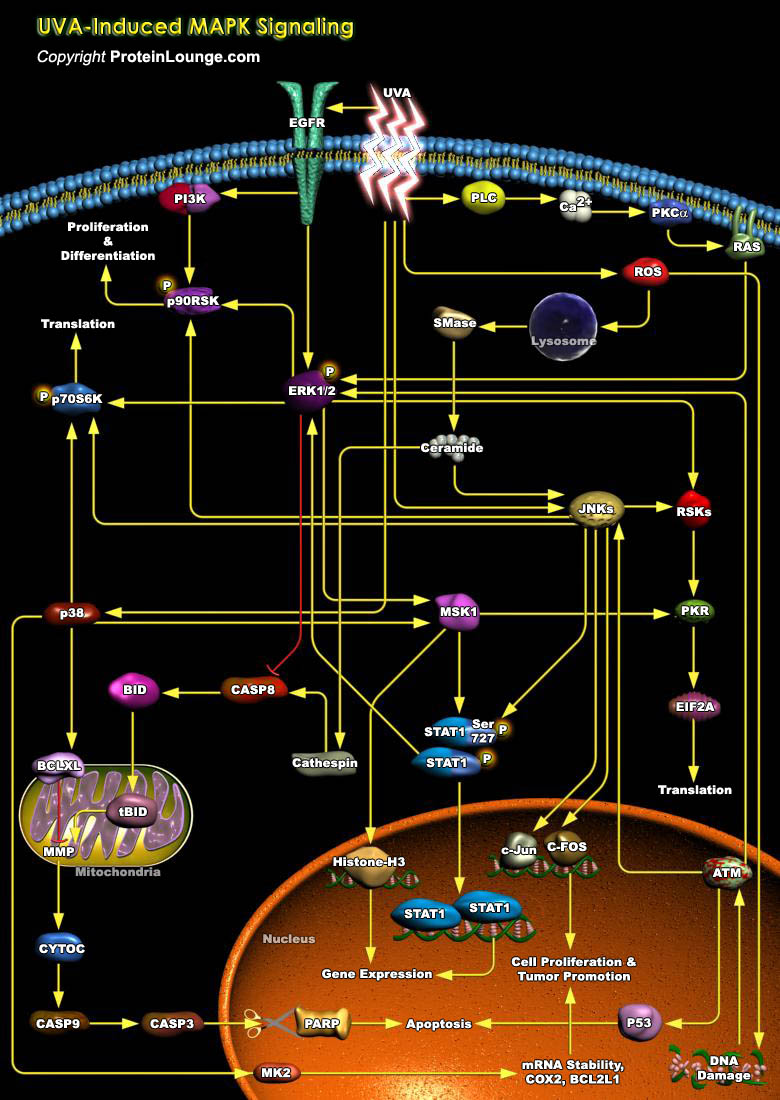
Ultraviolet radiation (UVR) is an electromagnetic radiation that is shorter in wavelength than visible light but longer than X-rays. It falls in the range of 100nm to 400nm and is the most important environmental carcinogen leading to the development of skin cancers. UVR is divided into at least three different categories based on wavelength that includes ultraviolet C (UVC; 100–280 nm), ultraviolet B (UVB; 280–320 nm) and ultraviolet A (UVA; 320–400nm). 90-95% of terrestrial radiation from the midday sun comprises UVA that can reach the dermal layer of human skin (Ref.1). UVA can cause DNA damage by producing reactive oxygen species (ROS) and can induce skin cancer. UVA irradiation affects cellular signaling mechanisms and is known to[..]
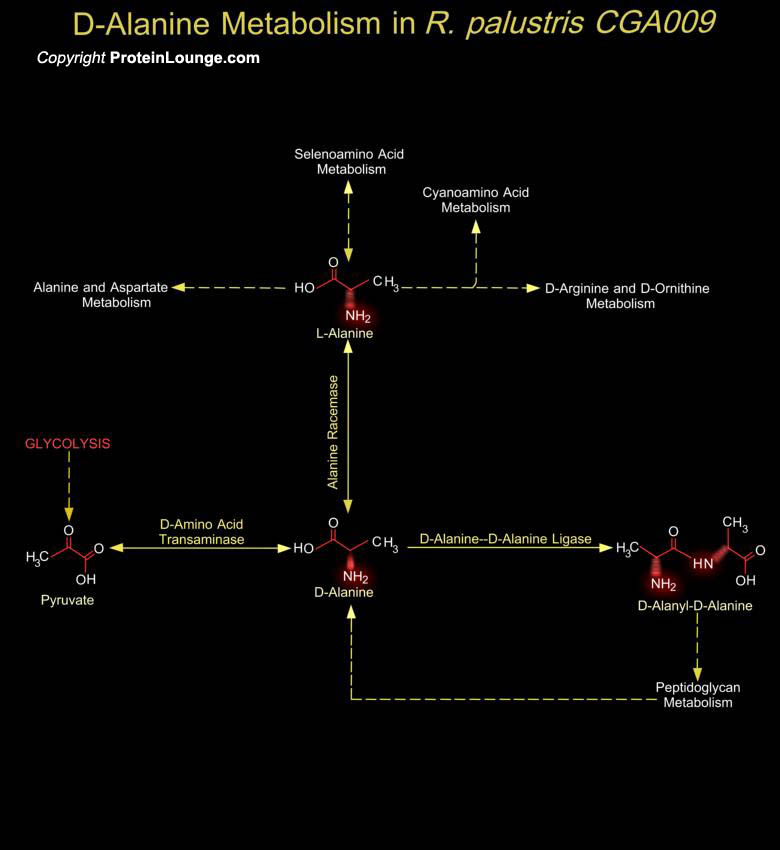
Rhodopseudomonas palustris is a purple photosynthetic bacterium that belongs to the Alpha-Proteobacteria and is widely distributed in nature as indicated by its isolation from sources as diverse as swine waste lagoons, earthworm droppings, marine coastal sediments and pond water. It has extraordinary metabolic versatility and grows by any one of the four modes of metabolism that support life: photoautotrophic or photosynthetic (energy from light and carbon from carbon dioxide), photoheterotrophic (energy from light and carbon from organic compounds), chemoheterotrophic (carbon and energy from organic compounds) and chemoautotrophic (energy from inorganic compounds and carbon from carbon dioxide). R. palustris enjoys exceptional flexibility within each of these modes of[..]
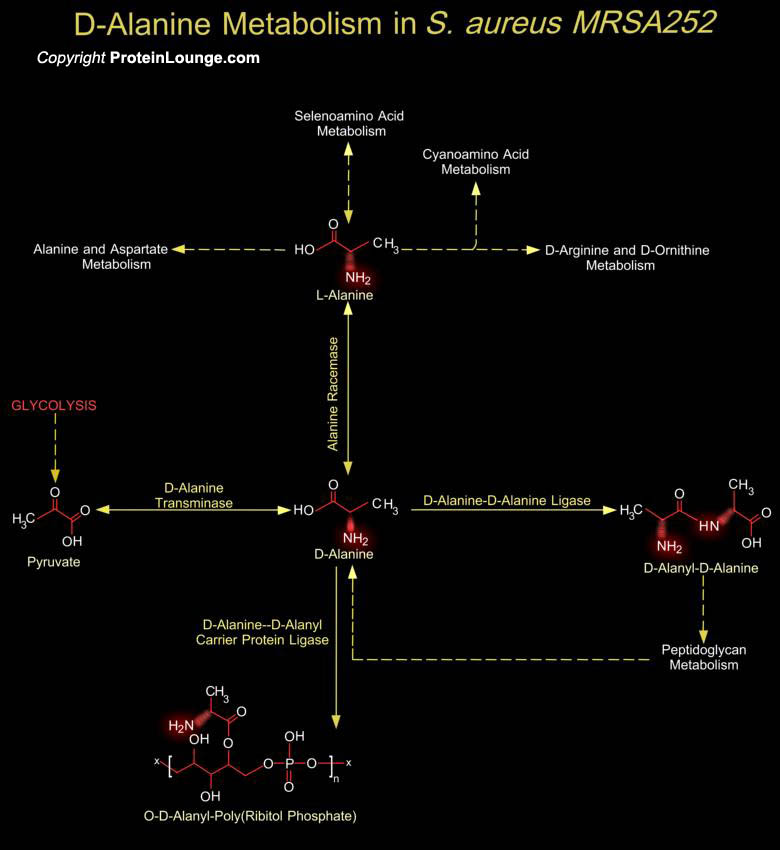
Staphylococcus aureus are Gram-positive nonmotile coccus that grows in aerobic and anaerobic conditions, in which it forms grape-like clusters. S. aureus is an important nosocomial and community-acquired pathogen. It produces numerous toxins including superantigens that cause unique disease entities such as toxic-shock syndrome and staphylococcal scarlet fever. Its genetic plasticity has facilitated the evolution of many virulent and drug-resistant strains, presenting a major and constantly changing clinical challenge. Two disease-causing S. aureus strains have been isolated from distinct clinical settings: a recent hospital-acquired representative of the EMRSA-16 (Epidemic Methicillin-Resistant S. aureus) clone (MRSA252), a clinically important and globally prevalent[..]

Group-A Streptococcus pyogenes remains an important human pathogen responsible for a variety of suppurative infections, including pharyngitis, scarlet fever, impetigo, and cellulitis and for nonsuppurative sequelae, such as acute rheumatic fever, acute glomerulonephritis, and reactive arthritis (Ref.1). S. pyogenes strains are grouped into two classes on the basis of post infectious sequelae associated with each strain, Class-I is responsible for rheumatic fever and Class-II is responsible for acute glomerulonephritis. S. pyogenes strain MGAS10394 is the first Streptococcus M6 genome to be sequenced and is the largest Group-A Streptococcus genome sequenced to date (Ref.2 & 3).As is the case in other Gram-positive bacteria, the cell wall of S. pyogenes is associated[..]
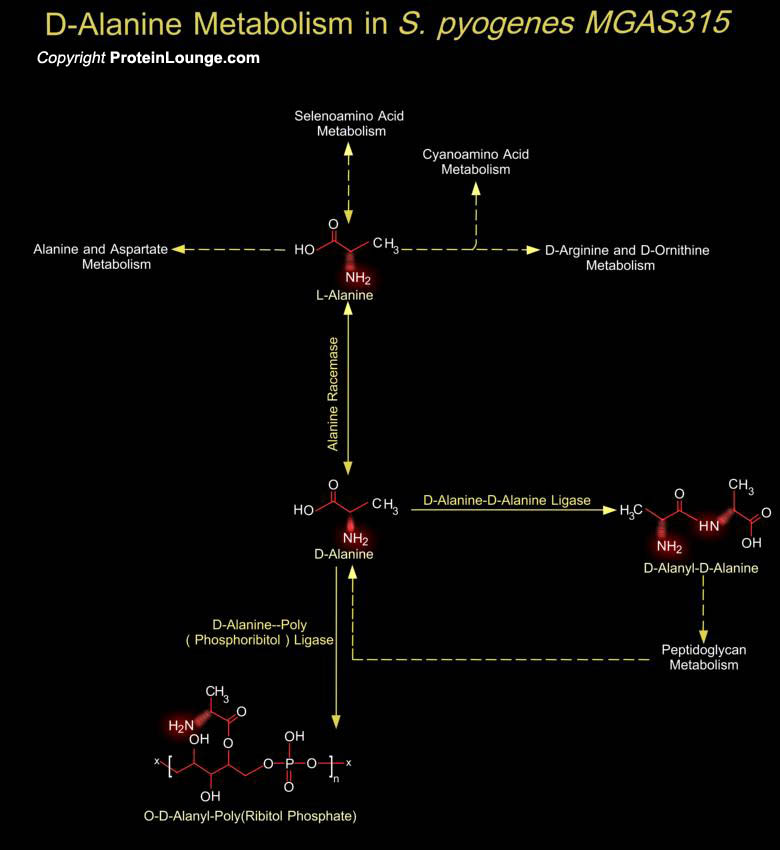
Group-A Streptococcus pyogenes remains an important human pathogen responsible for a variety of suppurative infections, including pharyngitis, scarlet fever, impetigo, and cellulitis and for nonsuppurative sequelae, such as acute rheumatic fever, acute glomerulonephritis, and reactive arthritis (Ref.1). S. pyogenes strains are grouped into two classes on the basis of post infectious sequelae associated with each strain, Class-I is responsible for rheumatic fever and Class-II is responsible for acute glomerulonephritis. S. pyogenes strain MGAS315 (Serotype M3) was isolated from an STSS (Streptococcal Toxic Shock-Like Syndrome) patient. The Serotype M3 is among the most prevalent in terms of involvement in severe invasive infections (Ref.2 & 3).As is the case in[..]
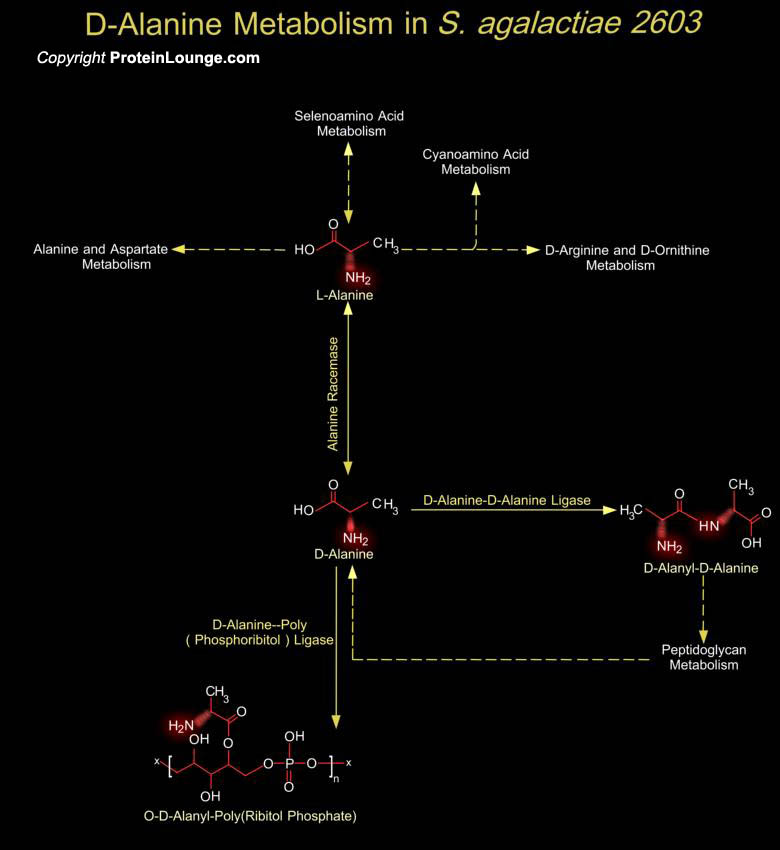
Streptococcus agalactiae, or Group-B Streptococcus is a Gram-positive nonmotile bacterium and is the leading cause of bacterial sepsis, pneumoniae and meningitidis in neonates in U.S. and Europe. It usually behaves as a commensal organism that colonizes the gastrointestinal or genital tract of 25-40% of healthy women, but it can cause life-threatening invasive infection in susceptible hosts: newborn infants, pregnant women, and adults with underlying chronic illnesses (Ref.1).As is the case in other Gram-positive bacteria, the cell wall of S. agalactiae is associated with an array of proteins which can share common structural features. The cell wall of Gram-positive bacteria is a peptidoglycan macromolecule with attached accessory molecules such as TAs (Teichoic[..]
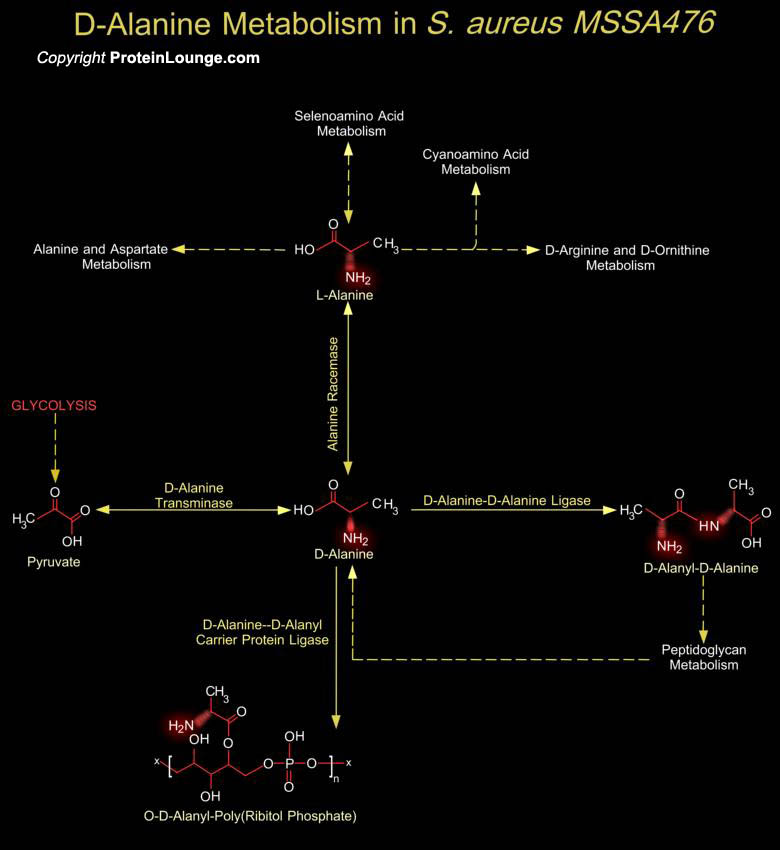
Staphylococcus aureus are Gram-positive nonmotile coccus that grows in aerobic and anaerobic conditions, in which it forms grape-like clusters. S. aureus is an important nosocomial and community-acquired pathogen. It produces numerous toxins including superantigens that cause unique disease entities such as toxic-shock syndrome and staphylococcal scarlet fever. Its genetic plasticity has facilitated the evolution of many virulent and drug-resistant strains, presenting a major and constantly changing clinical challenge. Two disease-causing S. aureus strains have been isolated from distinct clinical settings: a recent hospital-acquired representative of the EMRSA-16 (Epidemic Methicillin-Resistant S. aureus) clone (MRSA252), a clinically important and globally prevalent[..]
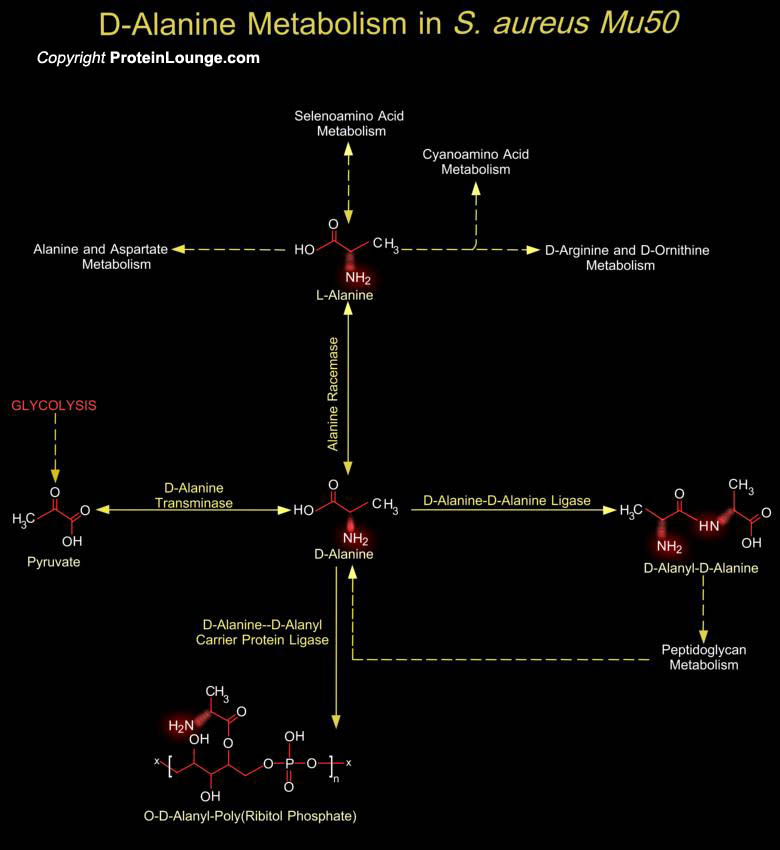
Staphylococcus aureus are facultative anaerobic Gram-positive cocci, that is a major cause of hospital acquired (nosocomial) infection of surgical wounds and infections associated with indwelling medical devices. S. aureus causes food poisoning by releasing enterotoxins into food, and toxic shock syndrome by release of superantigens into the blood stream. Over the last decade, VRSA (Vancomycin Resistant S. aureus) strains have become endemic in hospitals worldwide. The VRSA phenotype of S. aureus Mu50 is the result of changes to the cell wall structure. In comparison with MRSA strains, Mu50 and Mu50-like strains have a thickened cell wall, release more cell wall material into the culture medium and have increased rates of autolysis (Ref.1). The fine structure of the[..]

